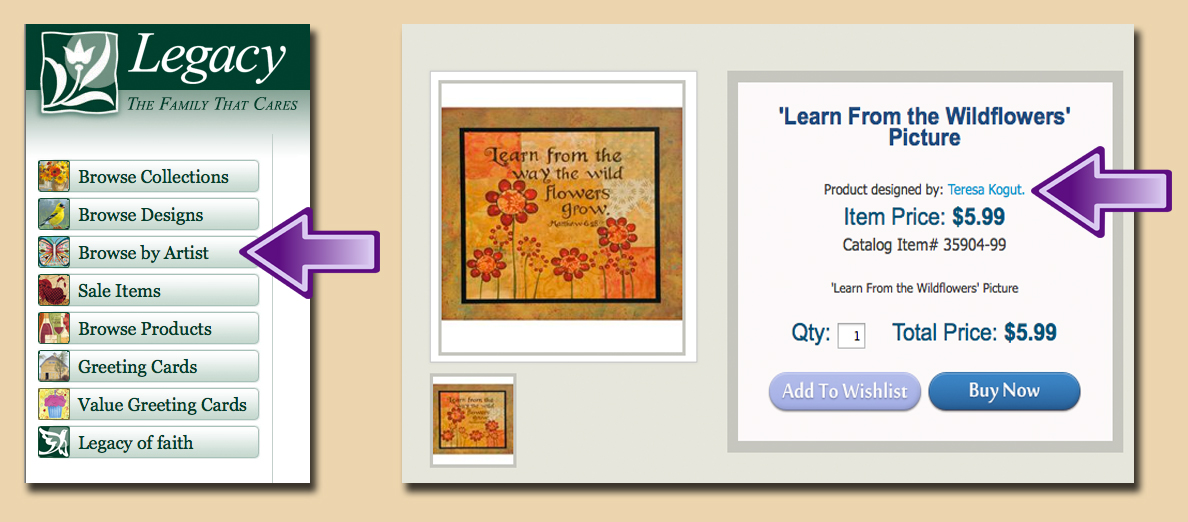
How to Get Started in Licensing part 2
If you are planning to self-represent, you may be asking yourself, "how do I go about finding manufacturers and how will I know if they are a good fit? (By the way, if you are planning to work with an art agency, one of their obligations is to connect you with manufacturers that are a good fit so you can focus on creating art)
You can find manufacturers in four different ways.
-
Licensing Industry Publications, such as, License! Global magazine. They highlight "The top 150 Global Licensors" each year. However, this publication is mostly for the "biggies" of the licensing world, such as, celebrities, sports stars, famous cartoon characters, etc. See part 1 of this article for other publications.
-
Retail Stores….go to Target, Hobby Lobby, local gift shops and research product. Look at the products featuring licensed art and ask yourself, "would my art be a good fit for this type of product?" Let’s face it, if you can’t visualize it then you can’t expect a manufacturer to visualize it either. Keep a pen & notepad with you and jot down the names of the manufacturers that you want to approach with your art then research them online. Note: If the manufacturer’s name isn’t available on the product because of private labeling, there will be an importer’s number on the product. Look for the RN (plus a five digit number), write it down and then you can research the manufacturer on the internet by visiting the Federal Trade Commission’s website and putting in the RN number.
-
Trade Shows. This is a fantastic way of researching products featuring licensed art. Here is a link to the 2013 Trade Show directory. If there is one near you, make it a priority to attend. You will have to have the proper credentials to enter a trade show so make sure to check the requirements for a buyer’s badge before just showing up.
-
The internet. As I mentioned in part 1, Surtex. They have a scrolling list of attendees on their home page listing all the manufacturers that attended Surtex looking for art to license. Another excellent place to look is AmericasMart Exhibitor’s Catalogs.
I suggest you pick only a few product categories to focus on in the beginning. Product categories span from gift bags, stationery, gift books, calendars, fabric, to figurines, wall decor, ceramic tabletop and on and on. Don’t overwhelm yourself, pick the categories that best suit your art for starters.
When researching a manufacturer, take a good look at their existing product lines.
- First of all, do they license art? Some manufacturers have an art department with in-house artists/designers so they don’t need to license art. The manufacturers that do license art can be spotted because they will have the artist’s name/logo by the product or their website may have the products listed by artist. Here are a couple of examples you might find.

-
Do they license my style of art? For example, if you create children’s art, you wouldn’t want to spend your time and energy approaching a manufacturer that features mostly floral art. If your style is a good fit, then ask yourself, "is my art a good compliment to their existing lines by offering a new twist on a current theme?" Keep in mind a manufacturer (hopefully) will not license art that is in direct competition with one of their successful existing artists.
Sending presentation packages.
In part 1 of this article, I offered information on how to send presentation packages. This is the most effective way to approach a manufacturer that you are sure is a good fit with your art. This can get expensive if you are sending this kind of package out to every manufacturer you are interested in. A more cost effective and yet still a very viable way to approach a manufacturer is to send them email pdf presentations along with a link to your website or online portfolio. If you do not have a website, you need to make it a priority. It is a really good idea to have a password protected area within your site that displays all of your available images. Manufacturers don’t have time to wander around your site looking for art; make it easy for them. Also, by having it password protected, you won’t be vulnerable to copyright infringers. (I am currently working on an e-book, "How to Build Your Own Website", which will tell you exactly how to create the best website for SEO and how to create password protected pages, so stay tuned) Important: while researching a manufacturer, check to see if they offer guidelines for submitting art. If so, be sure to follow them exactly.
All manufacturers work with digital files. If you create your art using photoshop or another digital program, make sure you save your files in layers. Often times a manufacturer needs to manipulate your art to fit their product specifications and layered files saves a lot of time.
If you create with brush and palette you will need to either have your art scanned or professionally photographed. Have the files saved as rgb .tif files at 300 dpi. Manufacturers need high res files and this is the standard. My files are 25mb to 80mb depending on the size of the original art.
Will they even take the time to look at a new artist’s work?
If you are concerned that manufacturers are only looking for established artists, don’t be. Of course, having a successful track record will work in your favor but it isn’t a requirement. I would say the best way to complete with established artists is to be professional, be prepared and be a sponge when it comes to learning about the industry.
Manufacturers are always looking for new a fresh art whether it is from an established artist or a new artist. Also, they are not only looking at the art, in some cases they are looking for an artist that is willing to work with them in designing products. They want your creative touch and artistic eye when developing a line.
Once you get started, never lose sight of the importance of creating new art.
Most manufacturers introduce new products every six months. As soon as they launch their product lines in January, they immediately turn their focus to products for the summer introduction. They need to know you will have new art to consider. Manufacturers need to see new, fresh, art from the heart throughout the year.
In closing, art licensing can be a lucrative, exciting and fun business, however, it is also very competitive and takes a talented, self-motivated, disciplined artist to make it a successful career. The more art you have in your portfolio when you first start will increase your chances for success and can determine how high you will soar! So get creating!
Cheering you on and wishing you the best!

Do you have any questions about licensing that you would like to see me write an article for? Was this article helpful to you? Post your comments below 



{ 0 comments… add one now }